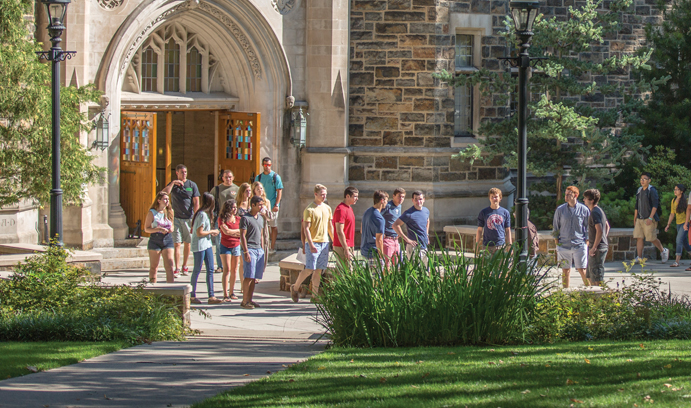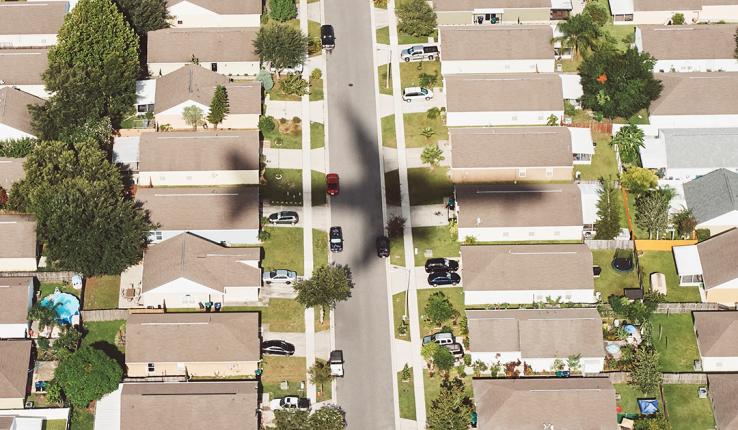Signaling Behavior in College Admissions

Photo: Christa Neu
When deciding which students to admit for an entering class, many colleges and universities evaluate not only the academic and extracurricular merits of the applicants, but also the likelihood of their matriculation.
Results of a study by Lehigh faculty found that selective universities give preference to applicants who demonstrate their interest (such as, signal their preference to the schools) because these applicants are more likely to accept upon receiving an admission offer, and that applicants who choose to signal a college or university tend to be better applicants. Results of the study also indicate a disadvantage for low-income students, and the authors offer suggestions for achieving equitable access in university admissions decisions.
Lehigh Economics Professors James Dearden and Chad Meyerhoefer, Lehigh Associate Professor of Economics Muzhe Yang, and Suhui Li of Mathematica Policy Research detail their findings in a recently accepted study titled Demonstrated Interest: Signaling Behavior in College Admissions. The study was accepted by Contemporary Economic Policy in November 2016 for publication.
The study, which focuses on those applying under normal admission rules—not early decision or early action—finds that a costly on-site contact, such as a campus visit, can increase the probability of admission.
“We find that the signals that are more costly to send, like visiting campus as opposed to attending a university’s information session held at a student’s high school, has a greater impact on a university’s admissions decision,” says Dearden, a co-author of the study.
Costly signaling actions include, for example, on-campus tours, on-site admission information sessions, and open house attendances. Participating in these on-site events cost time and money—it usually takes a day or a weekend for students and their parents to visit one school.
College and university admissions offices are concerned about the probability that high-quality applicants who receive multiple competing offers will accept offers of admission, and therefore applicants who make on-site contacts with admissions offices are valued more highly. In addition, schools have an incentive to admit students who are more likely to attend because this allows the schools to make admission offers to fewer applicants overall, thereby reducing acceptance rates.
In addition to being more likely to matriculate, applicants who choose to signal a college or university tend to be better applicants, explains Dearden. “Universities know that applicants who demonstrate interest, especially ones who send costly signals, are more likely to be active once they arrive on campus, have higher grade point averages, and are more likely to remain loyal following graduation.”
“The most surprising, but actually logical, finding,” Yang says, “is that sending strong signals of interest to the university matters most for applicants with the highest SAT scores.” By making on-site contacts, applicants could increase the probability of their admission by about 22 percentage points if the applicant is in the second highest SAT quartile, or by about 34 percentage points if the applicant is in the highest SAT quartile.
“These results could be explained by the university’s goal of achieving a high yield and a high selectivity through increasing offer acceptance rates while lowering the percent of applicants who are admitted,” Yang explains.
One implication of this study is that students from low-income families may be disadvantaged in university admission decisions.
“If achieving equity in college admissions is a goal,” the authors state in the study, “then our results point to the need for subsidizing costly signals of low-income students.”
The authors explore policies to reduce the inequity associated with the use of demonstrated interest in admission decisions, examining in particular the subsidization of costly demonstrated interest by low-income students (such as, covering the cost of on-campus visits for low-income applicants). If student income is properly subsidized, then admission decisions that account for demonstrated interest through signaling can be equitable, the authors said.
“Our results show that these subsidies can level the playing field of the university admissions game,” Dearden says.
To test their hypothesis, the researchers used unique and comprehensive administrative data, which included all contacts made by each applicant to the admissions office of a medium-sized highly-selective university during two admission cycles. After excluding some of the applicants, international students for example, the final sample includes 12,501 applicants.
Why it Matters:
Low-income students face disadvantages in applying to colleges and universities. The study offers suggestions for achieving equitable access in university admissions decisions.
Posted on:




